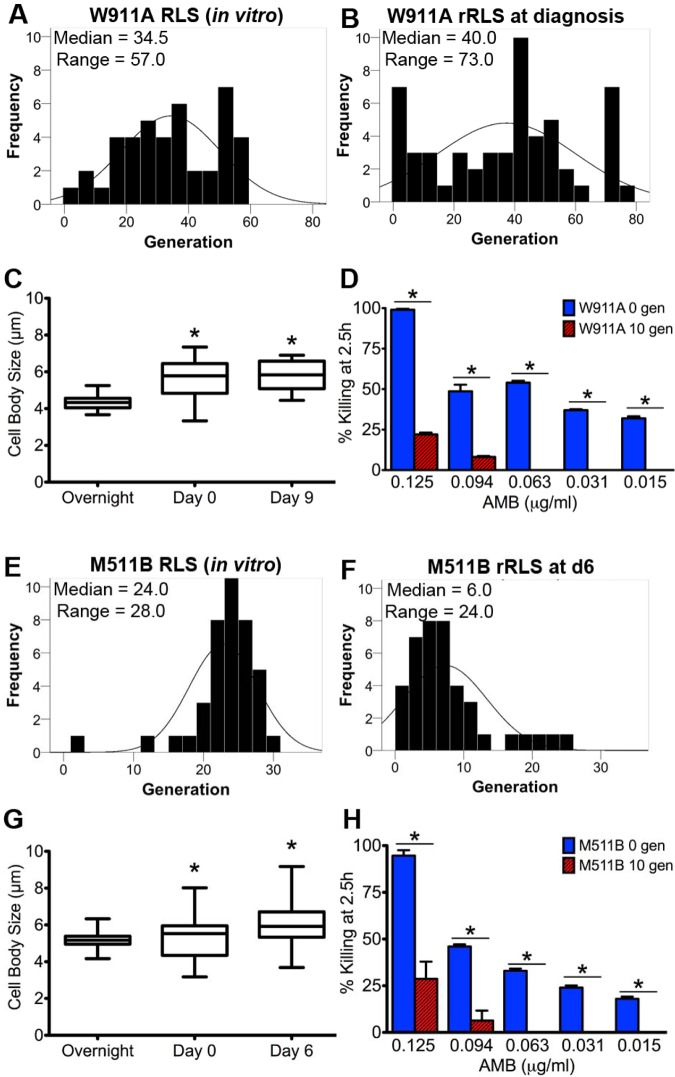FIG 4 .
In vivo and in vitro selection of older cells was observed in human CME. (A and B) The rRLS of C. neoformans cells from the first lumbar puncture of patient W911 (W911A cells) showed a trend for selection of older cells with a shortened rRLS (40.0 versus 34.5 generations on average; P > 0.01 by Wilcoxon rank sum test). (C) Cell body size of in vivo cells from patient W911 derived at day 0 and day 9 was increased, suggesting that they were of advanced age (P < 0.001 by Kruskal-Wallis test). (D) To investigate whether antifungal treatment may explain the selection of older cells in the host, we exposed 0- or 10-generation-old W911A cells to AMB in vitro and found that they were more resistant to antifungal killing (P < 0.01) as indicated by the bars and asterisks. (E and F) Similarly, the rRLS of cells from the second lumbar puncture of patient M511 (M511B cells) was significantly reduced compared to its in vitro RLS (6.0 versus 24.0 generations on average; P < 0.01 by Wilcoxon rank sum test). Unlike the first patient, this patient had been on AMB when the cells were collected, which likely drove the selection of older cells. (G) The size of C. neoformans cells from patient M511 was increased relative to that of in vitro C. neoformans cells (P < 0.001 by Kruskal-Wallis test) as indicated by the asterisks. (H) AMB experiments confirmed that 10-generation-old M511B cells were more resistant to antifungal killing.

